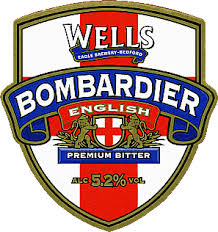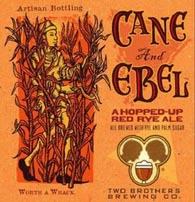Marketing.
As the “craft” beer movement – industry, marketing is more and more the name of the game. In 2009 I toured the Lagunitas brewery in Petaluma, California. Someone asked the tour guide how large their marketing budget was. The response was a chuckled, “We don’t have a marketing budget.”
Fast forward to today and every brewery – new, old, large, small – had better have a solid marketing and sales plan in place if they want to thrive. As competition intensifies, I suspect they will need them to merely survive.
Many breweries now hire PR firms. At some it is next to impossible, even (or maybe especially) for media, to communicate directly with someone from the brewery. All communications go through the PR representatives.
Surly Brewing is a case in point. Once upon a time it was relatively easy to get a question answered by owner Omar Ansari or former head brewer Todd Haug. Nowadays, even simple questions directed to personal emails receive responses from representatives at One Simple Plan, followed up by second emails inquiring if the needed information had been received. Typically the answer is no.
I don’t fault them for this. As frustrating as it might be for me, it is as it needs to be for them. As Surly grows, their time becomes increasingly valuable. As I already mentioned, marketing is now the name of the game and PR firms are part of it.
It could be argued that much of Surly’s success has come from marketing. I’m not knocking the beer. The beer is great. If it weren’t, the marketing would not have worked as well as it did. But Surly’s cantankerous image and “do it our way” persona appealed to drinkers at the beginning of the current “craft” revolution. Drinking Surly made one a rebel. The image captured the zeitgeist in a way that I think surprised even the folks at Surly. But they recognized it early, manipulated it, and were able to capitalize on that oeuvre. It was savvy marketing that built their brand.
In a piece for Mspmag.com about Haug’s resignation from Surly and subsequent hook-up with Three Floyds, Dara Moskowitz Grumdahl opined that many of Surly’s more recent beers are decidedly un-surly. I would counter that this has always been the case and that it was marketing that made them seem so over the top. Hell is one of the brewery’s top-selling brands. It’s a simple, golden lager. The now-retired Bitter Brewer was a slightly Americanized English Bitter – hardly an extreme style. Bender is a brown ale. And Cynic is nothing more than a traditional Saison – and a comparatively uninteresting one at that. Surly’s lineup has always consisted largely of beers that did not go to extremes. The “extremes” were mostly minor tweaks and an aggressive public image.
Even the more extreme brews aren’t so extreme when viewed in a larger context. Furious was fierce for the region at the time of its release. But according to Haug, it was modeled on West Coast-style red ales – now called American Strong Ales by the BJCP – that already existed in abundance elsewhere. Think Bear Republic Rocket Red or Stone Arrogant Bastard. Abrasive is one of many double IPAs. Even Darkness has its antecedents – notably Three Floyd’s Dark Lord, which Haug will presumably now have a hand in brewing. But image and branding made the Surly beers feel bigger, bolder, and badder than they perhaps really were.
Todd Haug’s departure presents Surly with a dilemma. In her piece, Moskowitz Grumdahl quotes Haug as saying, “They marketed the shit out of me.” Indeed, Haug was the public face of Surly. I’m sure many Surly fans couldn’t identify Omar Ansari if they saw him. But everybody knows Todd Haug. Although he is one of the kindest and gentlest men in brewing, his outward demeanor – tat covered, goat bearded, heavy metal axe man – personified the Surly image. He looked the part of the devil’s spawn. He exuded an “I don’t give a fuck” attitude. Todd Haug put a personal face on Surly’s marketing.
So what is Surly to do now? I have no concern for the future of the beer. There are plenty of passionate and talented brewers there to keep the taps flowing. But what will become of the image? As the brewery gets bigger, it will be difficult to maintain the bearing of rebellious upstart. As people and entities mature that stance starts to look curmudgeonly. Even Stone Brewing’s arrogant attitude has softened of late. And who will be the public face that makes the marketing a tangible, touchable thing?
The Surly crew is smart. They clearly know how to market. I’m sure they’ll figure it out.
As a last tip of the hat to Todd, I’ll take a look at his last batches of Damien, Darkness, and Anniversary beer.
Here’s my notes:
 Damien
Damien
Surly Brewing Company, Minneapolis, Minnesota
Style: American Black Ale
Serving Style: 750 ml bottle
6.5% ABV
Appearance: Opaque black. Faint ruby highlights. Appears clear. Full, creamy, tan head with excellent retention.
Aroma: Toasted bread. Coffee. Light Oreo cookie chocolate. Medium-high Melon and tangerine hop notes provide bright contrast to deep, rich roast malt character. Moderate impression of sweetness. Low alcohol. Low dark fruit esters. Pine.
Flavor: Malt forward with ample supporting hops. Chocolate – semi-sweet. Low coffee. Smooth café mocha. Low caramel and bread crust. Vanilla. Melon and tangerine hops bring bright contrast to the roasted malt. Lifting. Bitterness is medium to medium low. Low alcohol. Low fruity esters. Something vaguely vinous. Finish is dry with lingering chocolate and melon/citrus/pine hops.
Mouthfeel: Medium-light body. Creamy. Velvety. Medium carbonation. Not warming. Not astringent.
Overall Impression: Like a lightweight, less-intense black IPA. Smooth, velvety chocolate countered by bright tangerine/pine hops. Easy to drink and drink a few.
 Darkness 2016
Darkness 2016
Surly Brewing Company, Minneapolis, Minnesota
Style: Russian Imperial Stout
Serving Style: 750 ml bottle
13% ABV
Aroma: Malt forward with moderate hop accompaniment. Coffee. Dry chocolate cookie. Licorice and dark fruits – raisins or dates. Alcohol is apparent – isopropyl. Moderate pine resin hops. Very low impression of sweetness.
Appearance: Voluminous, creamy, tan foam. Cascades in glass. Excellent retention. Black and completely opaque. Appears clear. Faint ruby highlights.
Flavor: Roast malt driven with subtler, malty sub-flavors and moderate hop support. Chocolate dominates – dark chocolate syrup with dry chocolate cookie at the end. Low coffee grounds. Caramel. Similar date/raisin dark fruits from the aroma. Licorice. Burnt black malt character in the finish, but not the primary roast note. Subtle undercurrents of vanilla and maple. Maybe even a hint of blackberries? Medium-high sweetness. Hop bitterness is medium-low. Tar. Medium-low, pine resin hop flavor. Alcohol is apparent – helps cut the sweetness without crossing the line to solvent. Finish is semi-sweet to sweet with lingering cookie-like, dry roast, dark fruit, and caramel.
Mouthfeel: Full body. Smooth and silky. Medium-high alcohol warming. Low carbonation. Not astringent.
Overall Impression: Okay, I’ll be that guy that I often deride. It’s not as good as last year. My notes from last year are much the same as this year. But last year the pine felt more intense, the overall feeling was less sweet, less heavy. At least in my memory. But I’m probably wrong. Still, this is good. Alcohol is high, but not quite intrusive. Love the chocolate syrup. And the satin texture is to die for. As always, whacks you in the head at first and then comes back to deliver lots of subtle complexity.
 Ten
Ten
Surly Brewing Company, Minneapolis, Minnesota
Style: Old ale aged on toasted sassafras
Serving Style: 750 ml bottle
10.5% ABV
63 IBU
Aroma: Floral alcohol. Bread. Chocolate. Toffee and brown sugar. Dark fruits. Vaporous alcohol is the dominant note. Camphor. High caramel with background vanilla. Very light earthy/herbal hops. Dark fruit esters – date and cherry.
Appearance: Full, creamy, beige head with good retention. Reddish brown/mahogany with red highlights. Clear.
Flavor: Malt forward with low hop accompaniment and alcohol. Malt is the dominant flavor – caramel and vanilla prominent. Background notes of milk chocolate and dark fruits. Alcohol is definitely a component – floral and verging on solvent/hot. Hop bitterness is medium, but still remains subservient to the massive malt. Low herbal/earthy hop flavors. Dark fruit esters – dates and maybe candied cherry. Sweetness is medium-high. Finish is off-dry to semi-sweet with lingering bitterness, alcohol, caramel and cherry fruit. Chocolate covered cherry or Brach’s chocolate covered cherries. Wood impression is missing. Or is that maybe a little root-beer character in there?
Mouthfeel: Full body. Low carbonation. Medium-high alcohol warming, but not quite hot. Low astringency.
Overall Impression: Let it warm up for a long while. Complexity doesn’t come through until its temperature is up there. Alcohol is a bit of a distraction, would do well with some age perhaps. Try it again in two years. Where’s the toasted sassafras? Am I missing something? I admit that I don’t know what toasted sassafras tastes like, so maybe I am. But my Boy Scout experience with sassafras leads me to expect root beer flavors. A generally pleasant sipper, but think it’s one of those rare beers that could be better in a couple years.

 hoppy beers. Ten club members gathered at Jeff’s apartment on the fringes of downtown Minneapolis to get their bitter on. This event was the second of three monthly events exploring the main ingredients of beer, malt, hops, and yeast. If last month’s
hoppy beers. Ten club members gathered at Jeff’s apartment on the fringes of downtown Minneapolis to get their bitter on. This event was the second of three monthly events exploring the main ingredients of beer, malt, hops, and yeast. If last month’s 
 Brothers, New Dog Town Pale Ale from Lagunitas, Three Floyds Dreadnaught Double IPA, and Old Horizontal Barleywine from Victory Brewing Company. These beers represented American hoppy styles of different intensities and flavors, from the bitter but balanced Cane & Able to the super-intense Dreadnaught, and from the grapefruit citrus of Old Horizontal to the straight-up Christmas tree pine character of the New Dog Town Pale Ale.
Brothers, New Dog Town Pale Ale from Lagunitas, Three Floyds Dreadnaught Double IPA, and Old Horizontal Barleywine from Victory Brewing Company. These beers represented American hoppy styles of different intensities and flavors, from the bitter but balanced Cane & Able to the super-intense Dreadnaught, and from the grapefruit citrus of Old Horizontal to the straight-up Christmas tree pine character of the New Dog Town Pale Ale.
